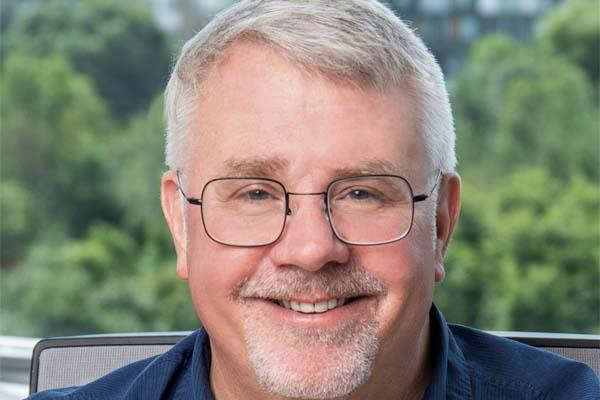
Dr. John Warner
Affiliation: Zymergen Research, Cambridge, MA
Seminar Title: "Green Chemistry: The Missing Elements"
Host: Christo Sevov, sevov.1@osu.edu
John Warner is a chemistry Inventor and cofounder of the field of Green Chemistry
In the early 1990's John realized that global students in chemistry had little (or no) training in predictive toxicology or understanding of environmental systems. He felt that the consequence of this lack of training was a root cause for why many industrial products and processes have negative impacts on human health and the environment. He realized that an ongoing lack of training would forever inhibit the invention of better, more sustainable technologies. Together with Paul Anastas, he defined the field of Green Chemistry and created the 12 Principles of Green Chemistry. He has spent his life working to change the field of chemistry and the education of future chemists to ensure that all practicing chemists will one day have the necessary skills to invent truly sustainable technologies. Together with Dr. Amy Cannon, he founded the non-profit, Beyond Benign that offers the "Green Chemistry Commitment" that asks University Chemistry programs to add the principles of green chemistry into their required curriculum. As of 2022 nearly 100 international universities have signed this commitment. John's career has spanned all aspects of the chemical enterprises, providing real world examples of green chemistry:
As an Industrial Chemist:
• Worked for Polaroid Corporation and The Zymergen Corporation.
• Received the Perkin Medal in 2014. (Highest honor in US Chemical Industry)
• Flied over 330 patents.
• Invented technologies for companies including Nike, Givaudan, Covestro, Lanxess and Entegris.
• Served on advisory boards for companies including Dow, Nike, Levis and Apple.
As an Academic Chemist:
• Full Professor of Chemistry at University of Massachusetts Boston
• Full Professor of Plastics Engineering at University of Massachusetts Lowell
• Distinguished Professor of Green Chemistry at Monash University
• Honorary Professor of Chemistry at Technical University of Berlin
• Visiting Professor at AgroParis Tech
• Global Chair of Sustainability at University of Bath
• Created world’s first graduate program in Green Chemistry.
• Over 100 publications
• Received Presidential Award for Excellence in Science Mentoring in 2004
• Received the August Wilhelm von Hofmann medal in 2022
As Entrepreneur
• Named Lemelson Invention Ambassador in 2016
• Created 6 ongoing companies
o Warner Babcock Institute for Green Chemistry
o Beyond Benign
o Collaborative Medicinal Development
o Collaborative Aggregates
o Ambient Photonics
o Hairprint
• TU Berlin named the John Warner Center for Startups in Green Chemistry
As Chemicals Policy Advisor:
• Cofounder of US EPA Green Chemistry Challenge Award
• Strategic Advisor Victorian Environmental Protection Agency
• Cochair California Green Chemistry Science Advisory Board
• Testified to US Congress on The Sustainable Chemistry Research and Development Act of 2019
Biomimicry, Green Chemistry and the Circular Economy
The natural world is a beautiful and intricate system of intertwined and overlapping materials ecosystems. As humans, our understanding of the various interrelationships is only at the most basic level. One important reason why these naturally interdependent cyclic systems exist with exquisite complexity is because of the very fact that they all co-emerged over 3.8 billion years in the presence of one another. Evolutionary forces drove symbiotic relationships by selecting for and against mechanisms and materials that were conducive to the success of the entire multi-component matrix. As human society seeks to create a sustainable existence and a circular economy, we unfortunately have the disadvantage that our various industrial “species” have developed with a level of independence, essentially unaware of adjacent processes. We are forced into a position of creating connectivity’s that were not part of the considerations in the original design. Obviously, this creates a daunting challenge. While there have been some examples of sustainable products designed and deployed in many industrial settings, the vast majority of industrial products and processes continue to exist disconnected and unsustainable over the long run. The pathway to create most of these technological ecosystems will require the inventive application of biomimicry and green chemistry (the molecular level mechanistic underpinnings of sustainability). This presentation will describe mechanisms in nature that we should consider when designing the human built world. Illustrative examples of practical real world deployments will be presented.
Green Chemistry: The Missing Elements
Imagine a world where all segments of society demanded environmentally benign climate neutral products! Imagine if all consumers, all retailers and all manufacturers insisted on buying and selling only non-toxic truly sustainable materials! The unfortunate reality is that, even if this situation were to occur, our knowledge of materials science and chemistry would allow us to provide only a small fraction of the necessary products and materials that our economy is based upon. Unfortunately, the way we learn and teach chemistry and materials science in academia is for the most part void of any information regarding mechanisms of toxicity and environmental harm. Green Chemistry is a science that seeks to reduce or eliminate the use of hazardous materials at the design stage of a materials process. It has been demonstrated that materials and products CAN be designed with negligible impact on human health and the environment while still being economically competitive and successful in the marketplace. This presentation will describe the history and background of Green Chemistry and discuss the opportunities for the next generation of materials designers to create a safer and more sustainable future.
